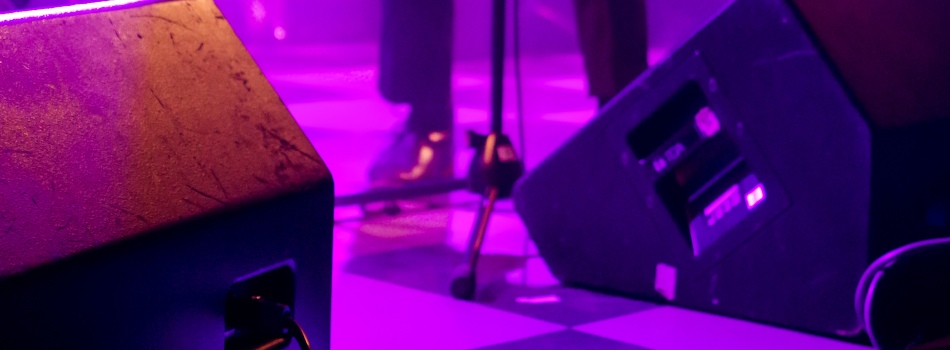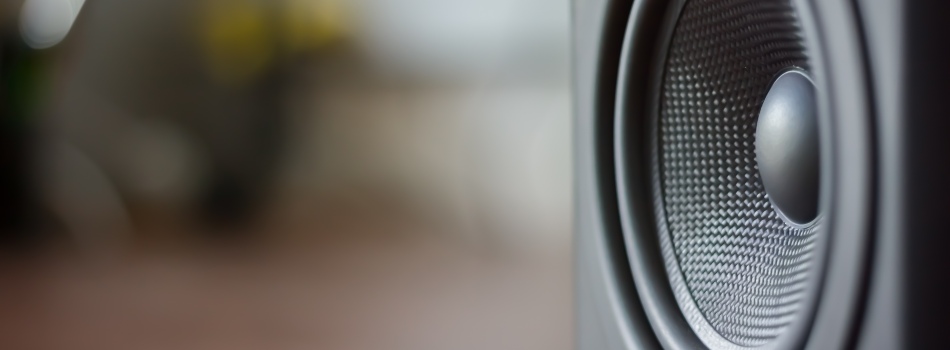
What’s the difference between active and passive speakers?
When you’re sorting out a public address system for your own conference or event, there are a few decisions that you’ll need to make before you do anything else. One of those, of course, is to make sure that you have the right power distribution equipment for the environment, and that it’s sufficient to power all of your connected systems and devices. But equally important is deciding exactly what kind of speakers you need for your event, and whether you’ll need active or passive speakers. The difference in a nutshell is that active speakers are generally self-powered, whereas passive devices need external power to properly function. But of course, it’s all a little more complex than that. Here’s what you need to know.
The essential components of a sound system
Let’s start off with the basics. Every large-scale sound system will incorporate some form of the following:
- Amplifier – an electronic system which takes a low voltage signal, and magnifies it until it’s powerful enough to vibrate another component called a driver within the speaker
- Crossover – filter circuitry which splits an audio signal into two or more frequency ranges, such as treble or bass frequencies
- Driver – a generally circular piece of material which converts an electronic audio signal into sound waves. It’s connected to a large magnet and coils of wire, and produces sound through vibrations
- Loudspeaker – in this context, the loudspeaker can essentially be defined as the box from which the sound is ultimately produced. It acts as a container for all the other components, including the amplifier, crossover and driver
What are active speakers?
Active speaker is a term that’s normally used to refer to self-powered speakers. These types of speakers have amplifiers built directly into their speaker cabinets, which means that they only need to be connected to a power source in order to be used immediately. If you like, you can think of them as essentially an all-in-one system that powers your speakers.
Active PA speakers vary in terms of their construction and sophistication – some also include built-in mixers, with equaliser settings and microphone pre-amps. You can probably already see why they’re so popular with most end users, as they’re regarded to be the simplest, easiest ‘Plug and Play’ option. Best of all, with active speakers, the internal amplifier is already tuned to the speakers, so you can be sure of getting the best sound right out of the box. Most active speakers are battery powered, making them easily transportable and perfect for travelling teams, or events held in several subsequent locations over a period of time.

What are passive speakers?
Passive speakers differ from active speakers in that they need an external power amplifier or mixers in order to operate. Again, different types of passive speakers vary in terms of the sophistication and range of functionality that they offer, but in all cases you’ll always need to ensure that speakers and amplifier are compatible with their respective impedance and power ratings. Getting this wrong will result in a lower quality sound in the very best case scenario, and in the worst case scenario you might even end up blowing up your speakers!
While passive speakers might not be quite as quick and easy to set up as self-powered active speakers, they do have their own substantial range of benefits to offer. For starters, they’re much lighter than active speakers without an internal amplifier to weigh them down. This degree of separation also makes servicing them a lot simpler, as the speaker and amplifier can be fixed independently of one another if one should ever happen to blow.
By the same token, it’s also easy to upscale your setup – if you’ve got four channels on your amps but only two speakers, you’re free to fill that capacity, as opposed to the more limited choices you have with self-powered speakers. Plus, you can control all your passive speakers from a single central point, rather than having to walk round to each speaker individually, as you might have had to do if they were self-contained.
These are just the basics of course – in the end, it’s up to you to decide what type of speakers best suits your event. Whatever the case, you can count on getting the very best power distribution equipment right here at Rubber Box. We provide reliable, adaptable modular power distribution equipment for your own studio or setup, and can even offer bespoke power distros if necessary. If you need a bit of help or advice in working out what you’re after, don’t hesitate to let us know – you can give us a call on 01282 677 910. We’re here to help!




